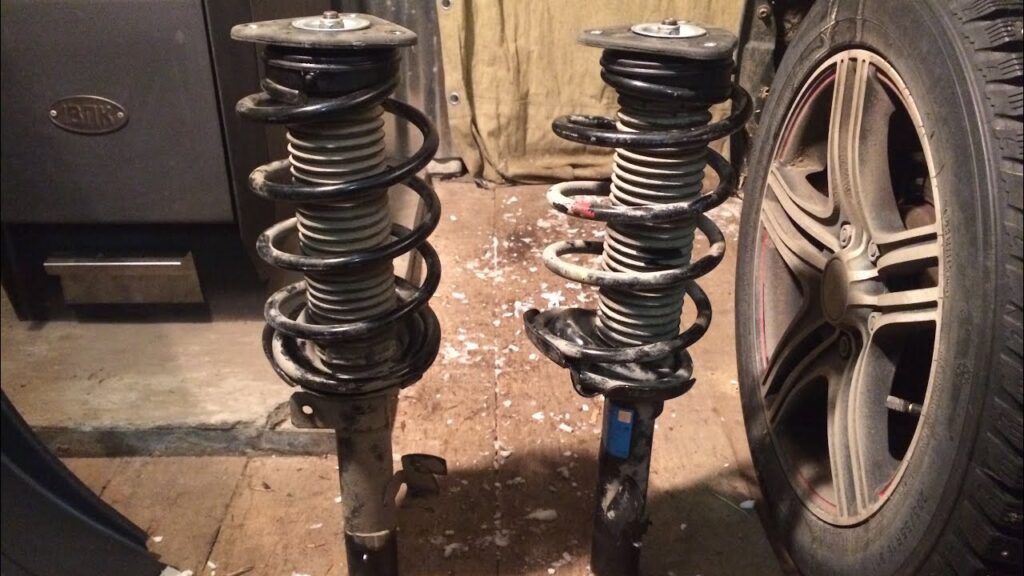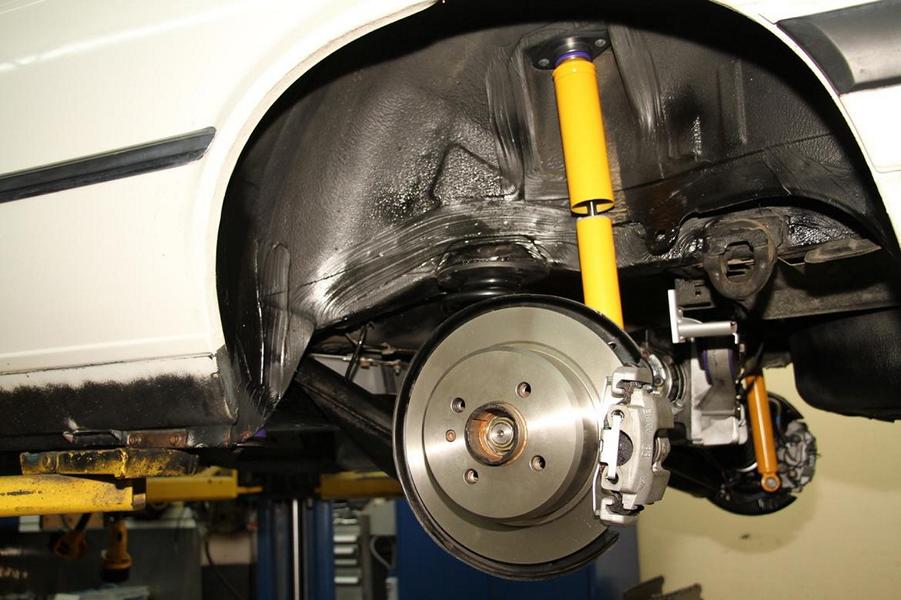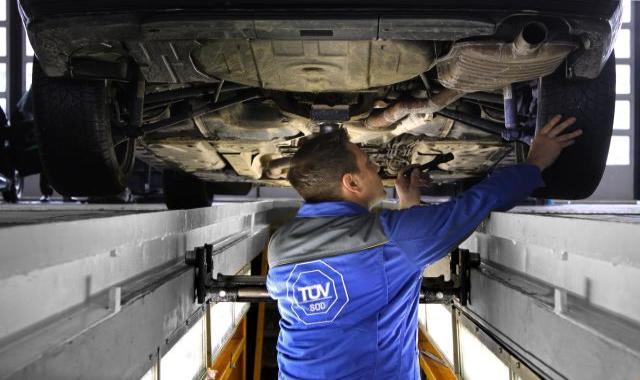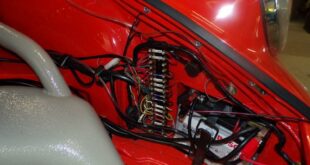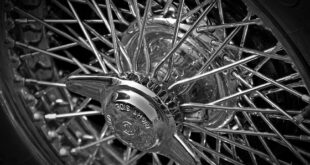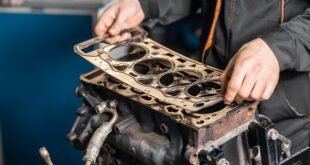Recently updated on January 27, 2022 at 10:19 am
Together with the spring, the connecting link in the middle of the wheel suspension and body is called the shock absorber. Among other things, it has the task of uneven surfaces balance, to slow down and uncomfortable vibrations of the vehicle reduce. If the shock absorbers are defective, the braking distance may be longer, for example. Defective shock absorbers don't just lead to one thing life-threatening behavior while driving, but often also increase the Tire wear and the car is unstable while driving. In the following article you will find a practical how to identify defective shock absorbers and also the Change is illustrated.
How do I change a shock absorber?
The shock absorbers should regularly be checked in a specialist workshop. At the latest for HU / AU main emission test will that be done anyway. In addition, is your own random inspection to be on the safe side not wrong either. If the shock absorber is defective, it must be promptly exchanged become. In general, it can be said that experience shows that shock absorbers are between 80.000 - 120.000 km need to be replaced. However, this statement depends on various criteria such as the quality and service life of the shock absorbers. Important information about the shock absorbers can also be found in the Repair and maintenance manual of the vehicle.
Warning: If you are not familiar with changing the shock absorber or do not have the right tools, then it is better to when you go to a workshop. Changing a shock absorber is often a lot more complicated than you think and the chassis is a security-relevant Element from the car. Visiting a specialist is not only safer, it also saves time and nerves and is insured too.
Tools for a change: Torque wrench, various nuts and ratchets (ratchet case), screwdriver, gear jack.
The replacement of shock absorbers on the front axle
- Jack up the vehicle on a lift.
- Remove wheels.
- The wheel suspension must be supported by suitable tools such as a transmission jack.
- The brake hose and the strut bracket must be detached from the ABS sensor.
- It is better if the spring is clamped in a spring tensioner for safety.
- The new shock absorbers must be vented.
- All fastening screws must be loosened and replaced.
- It is important to ensure that the specified torques are adhered to by the manufacturer.
- The cables from the ABS sensor and the brake hose that were disconnected first must be reattached.
Change of shock absorbers on the rear axle
- The chassis must be supported by a transmission jack.
- Depending on the vehicle model, the paneling inside the vehicle may have to be removed.
- During installation, it is necessary to ensure that all fastening screws are replaced.
- All accessories supplied must be installed.
- The torque specified by the manufacturer must be adhered to.
The cost of changing the shock absorbers can vary depending on the vehicle model, region and axle vary. Shock absorbers are considered wear parts, and are at least Pairwise changed. If the change has taken place, then of course it has to the track can be set new.
Recognize defective shock absorbers!
Even if you are mindful you can not always detect a defective shock absorber. Without various aids, the undertaking becomes a real challenge. If you want to prevent, you can pay attention to the following tips if a shock absorber should fail.
- Seesaw test: In a rocking test, the corners of the affected vehicle are pressed down one after the other. Then they are released again. When the rocking motion from the car longer than 1-2 oscillations a visit to a specialist is advisable. If you are unsure, it is important to carry out the seesaw test again in a professional workshop.
- Observing the tires: When the shock absorbers are defective, the tires often show irregular wear. They are then no longer evenly round, but have a wavy shape and look bad. The tire tread has, for example, a washed-out depth, which indicates a defect.
- Visual test: The visual test is considered a safe method to identify defective shock absorbers. Should be a shock absorber on closer inspection Traces of oil or Scoring on the piston rod (if visible) show, it is considered an indication that something is wrong with him.
- Rumbling or squeaking noises: If this is the case while driving, then it is clear that a direct route to the workshop or garage at home for the check is inevitable. Mindfulness while driving: If the car is driving on a poor and uneven road surface, it is easy to identify a defective shock absorber. The road's stability decreases in winding stretches. These are rumbling or squeaky Hear noises. Experience has shown that the driving experience is spongy. The noises usually arise on the side of the defective shock absorber.
When changing the shock absorber, it is important to pay attention to the right model when buying. There are two types of shock absorbers. The ones are filled with oil and the others with gas.
Note: Regular inspection of the shock absorbers is also important, if no signs of wear are visible while driving. There have been accidents where drivers drove with a broken shock absorber without realizing or even knowing it. This is because the materials only slowly lose their function and you subconsciously get used to the poorer properties. The effects of a shock absorber that is defective have a wide range. That belongs to them Blinds for the headlights, longer braking distances, stronger Susceptibility to aquaplaning and also damage Wheel bearings, Spring and Arm can be the result of one or more defective dampers.
PS: A squeak comes from the area of the Bremsanlage or the Wheel bearings? Then read our report on "Squeaking noises when driving a car - that could be the reason!" by.
Of course that had not happened yet!
tuningblog has countless other articles on the subject of car and auto tuning in stock. Do you want to see them all? Just click HERE and look around. In part, we would like to provide you with news but also off the tuning. In our category Tips, products, information & Co We have reviews of car or accessories manufacturers, new ones Tuning Wiki Terms or one or the other Leak veröffentlicht. Following an excerpt of the last articles:
"Tuningblog.eu" - we keep you up to date on the subject of car tuning and car styling with our tuning magazine and we present you the latest tuned vehicles from all over the world every day. It's best to subscribe to ours Feed and will automatically be informed as soon as there is something new about this post, and of course also to all other contributions.
 tuningblog.eu Your magazine about tuning the car
tuningblog.eu Your magazine about tuning the car
